
PUMPA - SMART LEARNING
எங்கள் ஆசிரியர்களுடன் 1-ஆன்-1 ஆலோசனை நேரத்தைப் பெறுங்கள். டாப்பர் ஆவதற்கு நாங்கள் பயிற்சி அளிப்போம்
Book Free DemoDuring grade 9, we have learnt about transpiration and its types in the topic plant physiology. But now, let us look at how it is involved in transportation.
What is transpiration?
It is a process similar to evaporation, as it is the loss of water in the form of vapour.
The evaporation of water from the aerial parts of the plant, especially through the stomata present in leaves, is known as transpiration.
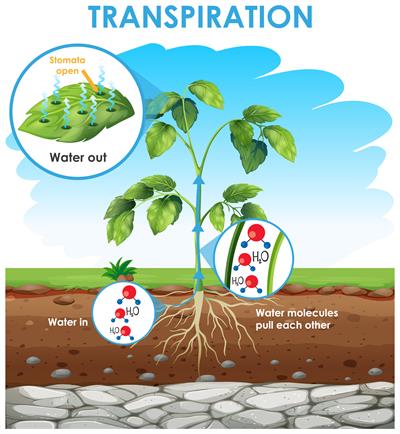
Transpiration
The stomata are open during the day and closed during the night based on the turgidity of the guard cells. The guard cells become turgid leading to the opening of the stoma when the water enters into the guard cell. When this water moves out of the guard cells, they become flaccid, leading to the closure of the stoma.
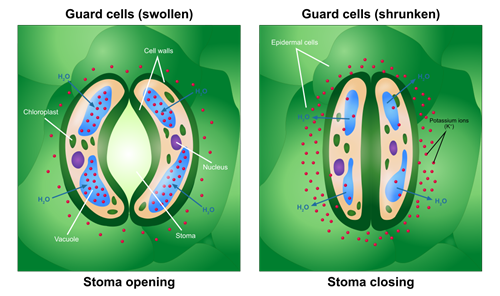
Guard cell in turgid and flaccid conditions
Transpirational pull:
- When the stomata pore (stoma) is open, the water evaporates from the mesophyll cells, thereby lowering water concentration in these cells.
- As a result of this low concentration, more water is drawn into these cells through osmosis from the xylem present in the veins.
- This loss of water from the leaves creates pressure at the top. Due to this, more water is pulled from the xylem towards the mesophyll cells.
- This is known as transpirational pull.
The transpirational pull is a suctional force that occurs due to the transpiration vacuum created through stomata.
The water column formed in the xylem tubes is sucked out by this transpirational pull, enabling the water to rise to great heights even in the tallest plants.
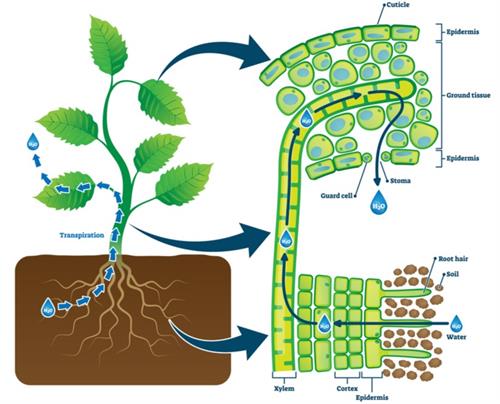
The upward pull of water from the roots
This pull continues up to the roots, causing the roots to absorb more water from the soil and ensuring that water flows continuously from the roots to the leaves.
A video explaining the mechanism of transpirational pull
Factors affecting transpiration:
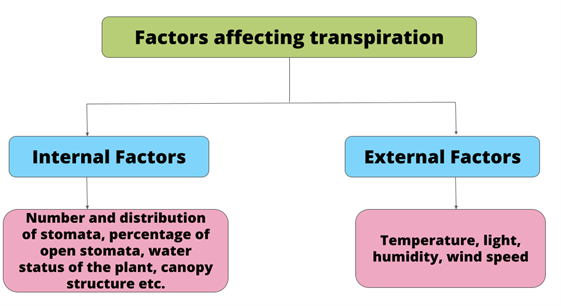
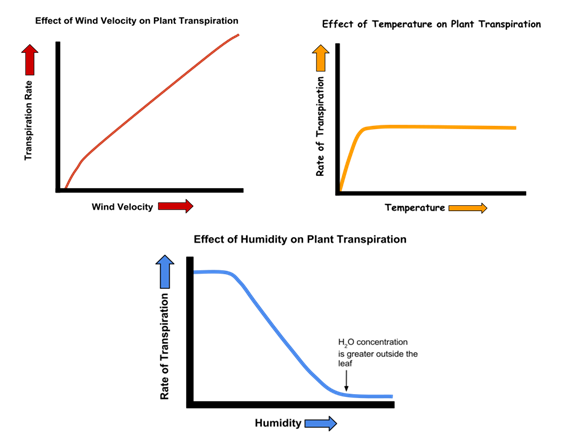
Wind speed, temperature and humidity effects on transpiration in plants
Reference:
https://www.freepik.com/free-vector/diagram-showing-transpiration-plant_6078279.htm#page=1&query=plant%20transpiration&position=1
https://commons.wikimedia.org/wiki/File:Transpiration_Temperature_Graph.svg
https://commons.wikimedia.org/wiki/File:Transpiration_WindVelocity_Graph.svg
https://commons.wikimedia.org/wiki/File:Transpiration_Humidity_Graph.svg